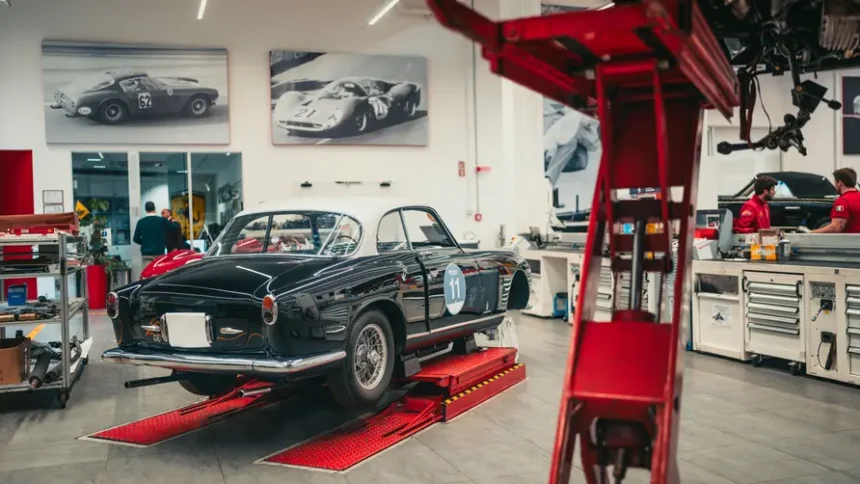Tucked away in a corner, just 50m from Maranello’s main entrance, lies a workshop that might seem like a dead end at first glance. This is Ferrari’s Classiche department, a place smaller and more cluttered than one might imagine. It’s here that the world’s most expensive cars come for a touch-up when needed.
Contrary to what one might think, this department hasn’t been around since the beginning. In the Fifties and Sixties, Ferrari was primarily a race team, focused on building cutting-edge racers to the latest regulations. The past was not their concern; it was all about what was next.
It was Jean Todt who, in 2004, recognized the value in Ferrari’s back catalog. He realized that if others were restoring and rebuilding Ferraris, the firm itself should have a stake in that. Thus, the Classiche unit was established two years later.
Andrea Modena, the head of Ferrari Classiche, explains that the department exists to preserve Ferrari’s heritage, story, and legacy left by its founder. Once a car is 20 years old, it’s designated a classic and falls under the umbrella of Modena’s team. Their aim is to preserve every single car produced from 12 March 1947 until exactly 20 years ago.
The Classiche department is a treasure trove of stories and history. Each car has a tale to tell, and the place truly comes alive when Modena shares these narratives. One such story involves a 212 Export that originally belonged to the famous movie maker Roberto Rossellini. Rossellini bought the car to travel from Rome to Oslo with his wife, Ingrid Bergman, to attend the Nobel prizegiving. Among the parts on the racks is a roof rack and suitcases, believed to be the first ever fitted on a Ferrari.
The department also houses a glass-walled room lined with red leather-bound ledgers. This is the archive, a time machine that holds the meticulously documented history of Ferrari. Enzo Ferrari, the founder, was famously fastidious. He wanted to know everything about the car, the weather, driver mood, rivals, race strategy, and it’s all there, wonderfully succinct, in these neatly handwritten ledgers.
Ferrari eventually moved to microfilm and then went digital at the end of the Eighties, after around 80,000 cars had been produced. The process of digitizing the older sections of the archive is ongoing, with about 50% completed so far.
The Classiche archive is the heart and history of Ferrari. Without it, Ferrari would be a great workshop with incredible skill, but it’s the archive that truly embodies what Ferrari is. As Modena proudly states, “This is Ferrari.”









